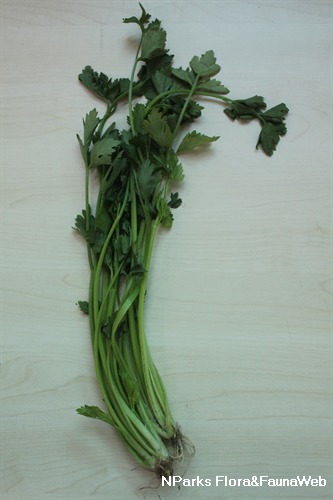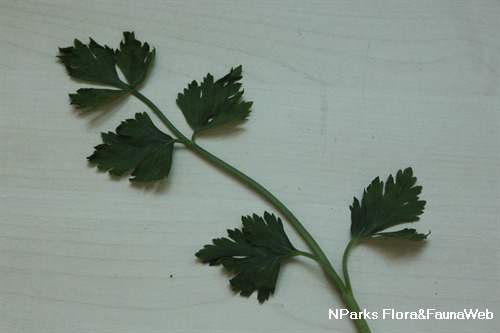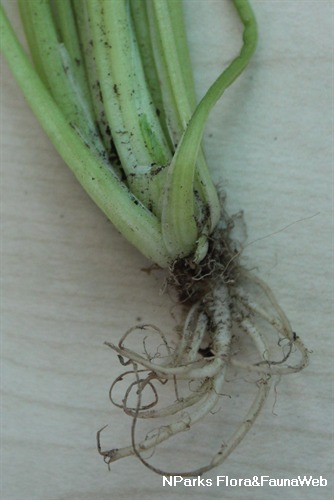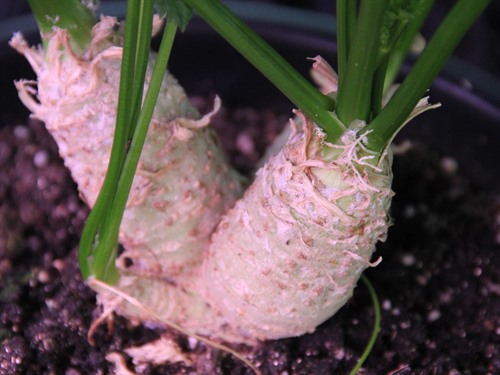.jpg)
Back
Apium graveolens (Chinese celery)
| Family Name: | Apiaceae (Umbelliferae) |
| Common Name: | Chinese Celery, Daun Sop, 小芹菜 |
Name
Classifications and Characteristics
| Plant Division | Angiosperms (Flowering Seed Plants) (Dicotyledon) |
|---|---|
| Plant Growth Form | Herbaceous Plant |
| Maximum Height | 0.5 m |
Biogeography
| Native Distribution | Africa, Temperate Asian and Europe |
|---|---|
| Native Habitat | Terrestrial |
Description and Ethnobotany
| Growth Form | Biennial herb up to 0.5 m tall. |
|---|---|
| Roots | Small, fibrous roots are located in a cluster at the base of the stem. |
| Foliage | Thin leaves are ovate (egg-shaped) to triangular and often 3-lobed (4 cm long, 5 cm wide). Leaf margin is lined with rounded to pointed teeth of various sizes. |
| Stems | The stem is long, narrow and hollow with a crisp texture (0.5 cm wide). It ranges in colour from white to dark green depending on variety. |
| Cultivation | This species is typically grown as an annual. |
| Ethnobotanical Uses | Edible Plant Parts : Edible Leaves, Edible Stems Food (Herb or Spice): The leaves and stems are added to soups and stir fries for their flavour. They are seldom eaten raw and have a strong taste. Chopped stems are an excellent addition to fried rice. |
Landscaping Features
| Landscape Uses | Container Planting |
|---|---|
| Thematic Landscaping | Economic Garden |
Plant Care and Propagation
| Light Preference | Semi-Shade |
|---|---|
| Water Preference | Lots of Water, Moderate Water |
| Rootzone Tolerance | Moist Soils, Fertile Loamy Soils |
| Propagation Method | Seed |
Foliar
| Mature Foliage Colour(s) | Green |
|---|
Floral (Angiosperm)
| Flower Colour(s) | White |
|---|---|
| Flower Grouping | Cluster / Inflorescence |
Image Repository
Others
| Master ID | 30382 |
|---|---|
| Species ID | 4691 |
| Flora Disclaimer | The information in this website has been compiled from reliable sources, such as reference works on medicinal plants. It is not a substitute for medical advice or treatment and NParks does not purport to provide any medical advice. Readers should always consult his/her physician before using or consuming a plant for medicinal purposes. |

.jpg)



